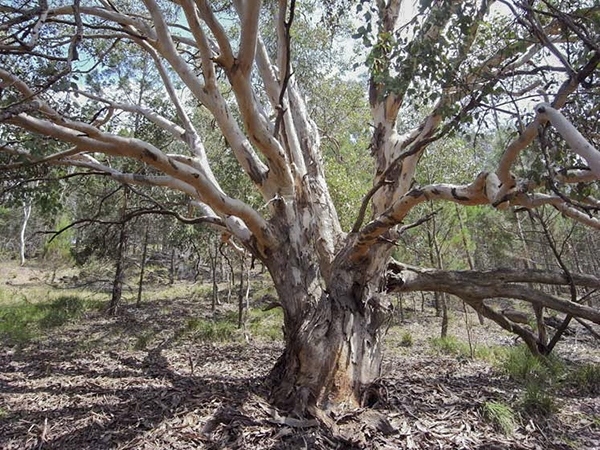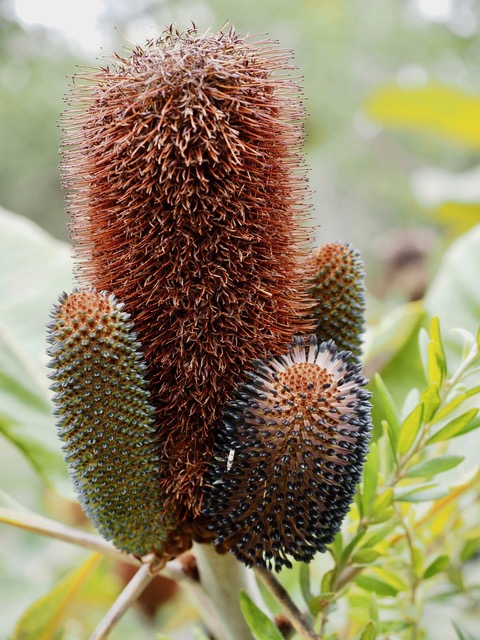The gold standard resource for identifying plants is herbarium specimens. These are pressed and dried plants or plant parts mounted on paper sheets with accompanying field notes about where and when the specimen was collected and possibly also brief details about the soil and surrounding plant community and geography. These herbarium specimens allow botanists to look at plant features in fine detail or at a microscopic level and take tissue samples for DNA analysis, for example. However, there are some plant features that deteriorate over time in these physical herbarium specimens; colour is one of the most obvious. Other important information about a particular species may not be captured in a herbarium specimen or may be difficult to describe even in field notes. This is where photographs of plants, as part of documenting a plant species, come into their own.

Photographs allow a range of relevant details of a particular plant species to be recorded, apart from those available from a herbarium specimen. Many plants are too large for an entire specimen to be stored in a herbarium – a tree would be quite a challenge! Photographs of entire specimens provide various types of valuable information, such as growth habit, arrangement of stems and branches and angle of leaves. Smaller scale features can also be more easily recorded in photographs, including colour and changes in colour and characteristics of bark, as well as associated information about soil type, the habitat the plant grows in and other species growing around it. Botanists are starting to talk about an “extended specimen” for a given plant, which includes herbarium specimens, field notes, field photographs, information from lab analyses and more.
One of the concerns botanists worldwide have raised is that records for a large number of plant species consist only of herbarium sheets. There are no photographs of these species in online databases and no photographs in existence at all for some species. This a problem because some species are difficult to identify accurately without field photographs. Another problem is that those species that are difficult to identify without field photographs cannot be monitored over time to gauge whether their populations are remaining stable, at least, or declining. If monitoring cannot be done, they may become extinct. Photographs of plants are a crucial tool for preserving plant species in the wild and conserving biodiversity.
There are some reasons behind what types of plants haven’t been photographed much or at all. Plants that grow in remote or difficult to access locations are a clear candidate. A second reason is that plants that are difficult to identify also may not have any photographs matched with them. A third reason is that plants that are low in charisma don’t get photographed. This last group of unfortunate plants include those with plain or insignificant flowers or those that are smaller and harder to spot, such as grasses, grass-like plants and herbs. Plants native to Australia that win on their charisma are Banksia, Hakea and Grevillea species. Their showy flowers have given them perhaps an unduly privileged place in photographic plant records!
Mesaglio and his co-researchers looked at 33 online resources with images of Australian plant species to investigate the photographic records that were held in them. They found that almost 20 % of Australian vascular plant species had no verifiable photograph in any of those online databases. This amounts to around 4,000 species! For Australian plant researchers alone to fill this gap would require a huge effort. However, in this era, when many people have a smartphone with a good quality camera, the opportunity is there for citizen scientists to make a substantial contribution to providing these missing photographs. These images can then be uploaded to platforms like iNaturalist, which has become the leading repository of photographs of the world’s vascular plants. Expert botanists can then examine the images uploaded and identify the plants shown.
Australia is not alone in countries with gaps in photographic records of flora but there are some countries that are doing a better job. Improving the photographic documentation of our flora is essential. It will increase the detailed knowledge we have of Australian flora and improve our ability to accurately identify more plants growing here. As a result, we will be able to monitor particular species that may be at risk and get a timely indication of any decline in numbers. This will ultimately increase our ability to maintain the biodiversity of Australian ecosystems as much as possible in the face of the many pressures they face. We can all play a part in this as citizen scientists, particularly if we like travelling around some of the less popular and more remote areas of the country with a sharp eye for ordinary-looking plants and a camera.
The original article was also shared in the Northern Beaches Caleyi Jan 2024. View the source material for this article here – Creative Commons licence 3.0 (CC BY). ’

